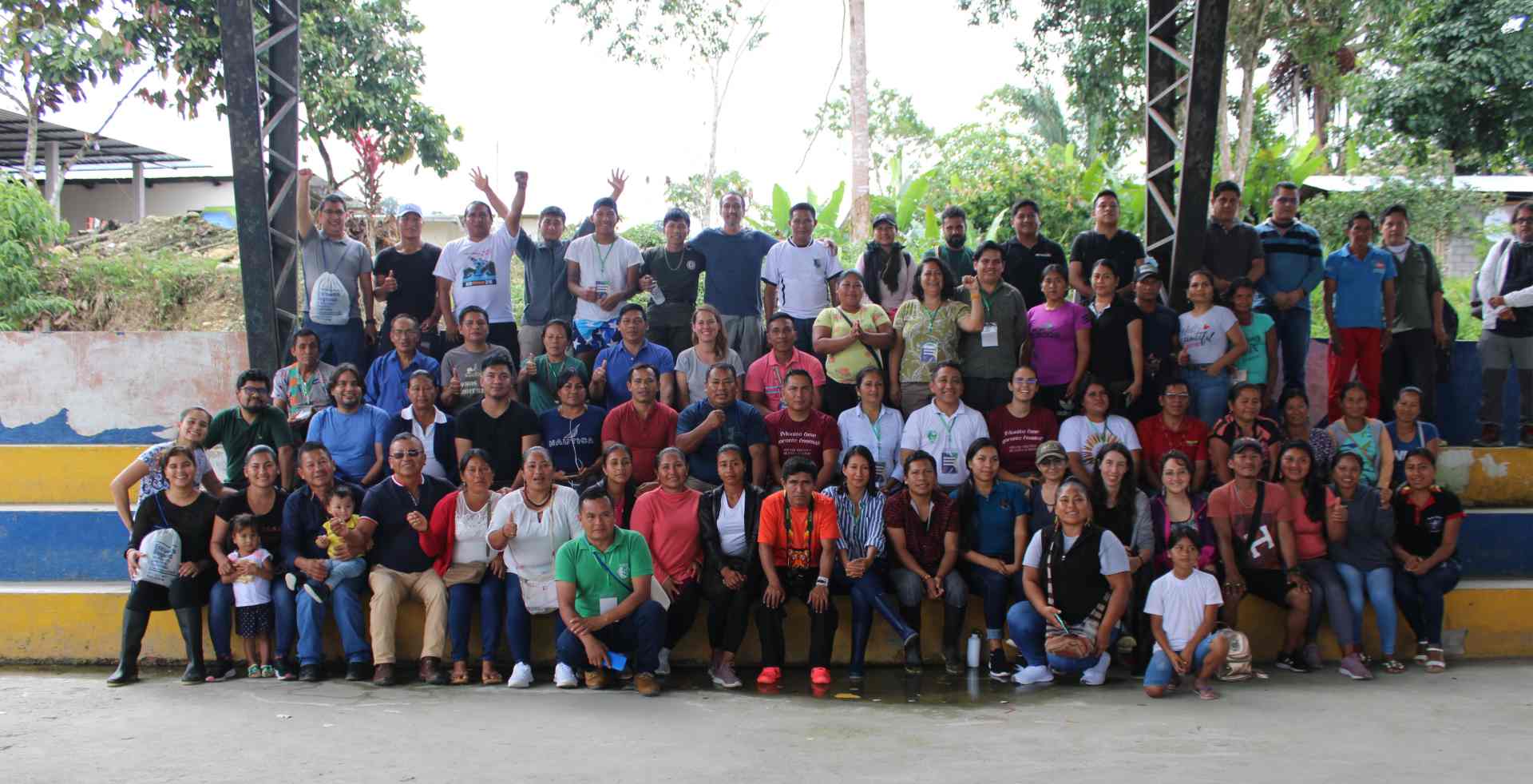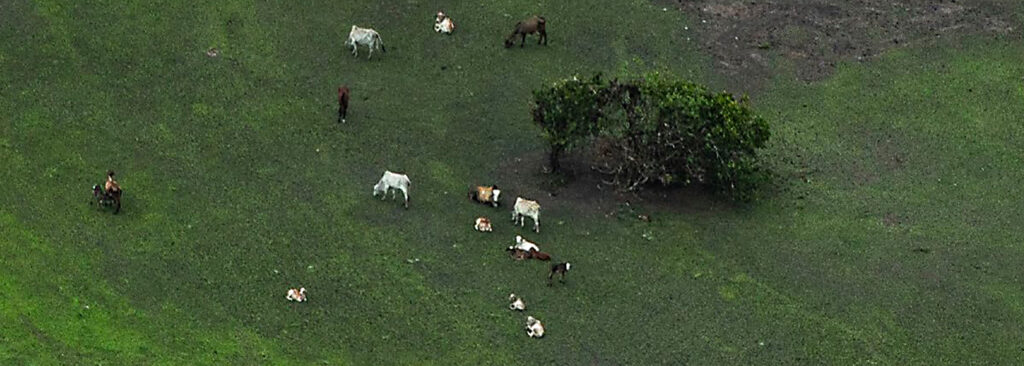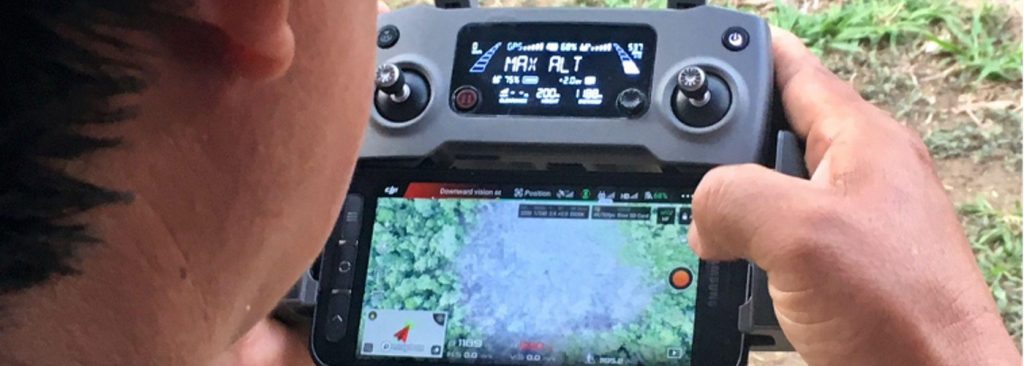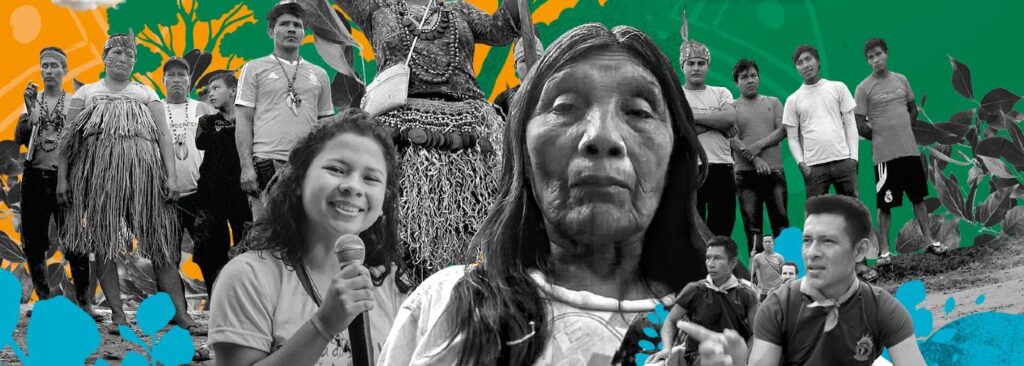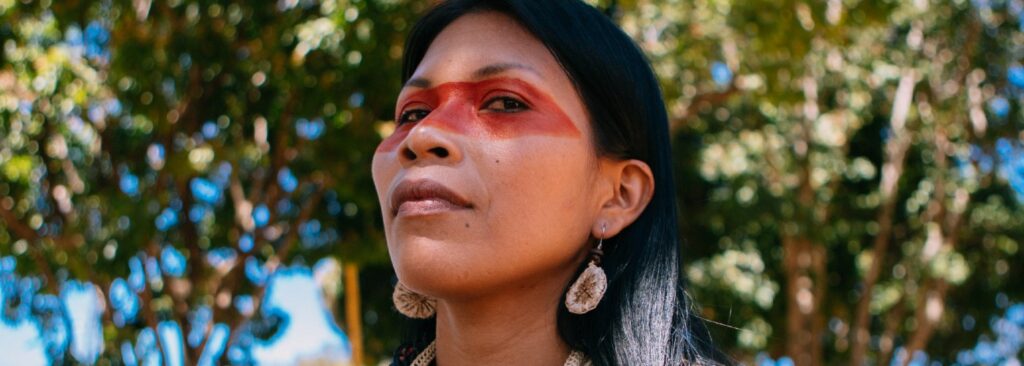By Nora Sánchez, All Eyes on the Amazon Communication Officer
Imagine walking in the middle of the Amazon rainforest, surrounded by the tallest trees you’ve ever seen, listening to the sounds of animals, birds and rivers. Now imagine that this idyllic atmosphere is suddenly broken by the scream of a chain saw, the thunder of trees falling, or the acrid stench of crude oil. This nightmare is actually a day in the life of an Indigenous forest guardian on patrol.
Indigenous peoples at the frontlines
Indigenous peoples are in a constant struggle to defend their territories and their rights.
And they’re up against a tall order: alarming rates of deforestation, invasive extractive industries, powerful climate change deniers and anti-rights governments – all threatening the survival of the world’s largest rainforest and the over 400 Indigenous peoples who call it home.
But in 2018, Alexandra Narváez and Alex Lucitante, Indigenous partners of our All Eyes on the Amazon (AEA) program, helped achieve a historic legal victory. Ecuador’s courts ended up canceling 52 illegal gold mining concessions granted without the consent of their Kofan community. The community thus succeeded in protecting 79,000 acres of pristine, biodiverse rainforest in the headwaters of Ecuador’s Aguarico River, which is sacred to the Kofan. This also earned Alexandra and Alex the 2022 Goldman Prize award – considered the “Green Nobel Prize.”
The Victory of the A’i Kofan of Sinangoe
Together with other members of the Kofan community guard, Alexandra and Alex were the ones who identified and selected the evidence of the damage caused by the mining concessions to the Sinangoe territory. That information was then brought to the community to collectively decide how to respond.
Their story is a testimony to the importance of forest monitors to protect the Amazon from the ravages of indiscriminate extractive industries. Combining their ancestral knowledge with community monitoring, surveillance technology, strategic alliances, and advocacy campaigns, they bring the shocking evidence of what’s happening in the Amazon Basin to everyone’s attention.
Access the story of “The Victory of the A’i Kofan of Sinangoe”, a true account of the actions led by Indigenous and local organizations from the Amazon Basin to protect their lands, featured in the series Path of Resistance.
The dangers forest guardians face
Monitoring parts of the Amazon to collect evidence of environmental violations has its complications. Patrolling such a vast territory means long hours (or days) of travel, away from home and family, and enduring unpredictable weather conditions. Not to mention the dangers of approaching mining, logging, or oil drilling sites which can risk violent, and even fatal, confrontations between monitors and invaders.
This was the case of Paulino Guajajara, Indigenous Forest Guardian, who was shot dead in 2019 in an ambush by loggers inside the Araribóia Indigenous territory in Brazil. Read his story: Brazil failure to protect indigenous lands causes one more death in the Amazon.
Technological tools to empower frontline defenders
Since 2018, our All Eyes on the Amazon (AEA) program has been working closely with local partners in the Ecuadorian, Peruvian, and Brazilian Amazon to improve environmental and territorial monitoring. Strategic alliances with specialized partners provide capacity building, technological devices, custom-made applications, and technical support. The aim is to achieve a safer work environment for monitors, better data collection to build evidence, and stronger monitoring teams within Indigenous communities.
For example, Digital Democracy, one of AEA’s specialized partners, built MAPEO, a free digital toolset for documenting, monitoring, and mapping data. They collaborated with local partners like as ECA Amarakaeri (Perú) and Alianza Ceibo (Ecuador) to include the needs and realities of each culture and territory. MAPEO played an important role in the victory of the A’i Kofan Sinangoe community (mentioned earlier) and that of the Waorani people against the Ecuadorian government to halt an oil concession on half a million hectares of rainforest.
Additional achievements of the program are the image optimization of the Global Forest Watch platform, developed by the World Resources Institute, and the development of a high-resolution alert system for the Amazon Basin. The system allows local partners and environmental defenders to perform real-time monitoring of almost 7 million hectares of the Amazon rainforest via satellite for safe and timely identification of hot spots, deforestation, and other changes.
Capacity building to ensure sustainability
However, local ownership is perhaps the most vital strategy we have for achieving real and lasting change. For that reason, capacity building is key to ensuring the sustainability of these efforts to defend territories and rights in the Amazon. In total, 479 people, including coordinators, monitors, and Indigenous leaders of AEA, have been trained to use deforestation alerts for monitoring. More than 170 Indigenous and local communities have learned how to use and manage data, satellites, and other technological resources and tools. And over 270 devices (cell phones, drones, and GPS) have been delivered to forest monitoring teams of our local partners.
The fact that monitors, coordinators, and Indigenous leaders from different peoples and countries work together is also very important. This strengthens collective learning and collaboration, and promotes the leading role of Indigenous guardians in monitoring activities. Last May, the AEA program held the Regional Encounter of Environmental and Territorial Monitors, where over 20 organizations and 50 participants from Ecuador, Peru, and Brazil shared experiences, lessons learned, good practices, and common challenges.
Interested in learning more? You can download the systematization of the Regional Encounter of Environmental and Territorial Monitors and other resources and tools for land defense at the AEA Learning Platform.
Positioning Indigenous monitors as key actors in land defense
While Indigenous monitors are at the frontlines and play a crucial role in the prompt identification of irregularities in their territory, they are often under-recognized and unpaid. Even so, they fulfill their role despite dangers and adversities because the Amazon is their home and they must defend it.
All Eyes in the Amazon supports their mission and fosters their recognition within their communities and society, since their role in protecting nature and conserving the world’s largest rainforest is fundamental in our common struggle against climate change.
Let’s speed up our efforts to effectively combat the climate crisis by supporting frontrunners and locally-shaped climate solutions like land monitoring to stop us from reaching an irreversible turning point. Let’s put All Eyes on the Amazon!
Learn more about how land monitoring defends the Amazon and what All Eyes on the Amazon does at: www.alleyesontheamazon.org
About All Eyes on the Amazon
The All Eyes on the Amazon (AEA) program aims to stop the deforestation and degradation of the Amazon rainforest by defending Indigenous peoples’ and local communities’ rights.
Funded by the Postcode Lottery, the program is a unique coalition led by Hivos, Greenpeace, and the Coordination of Indigenous Organizations of the Amazon Basin (COICA) that brings together more than 30 local and international organizations working in the fields of technology, Human and Indigenous Rights, conservation, transparency, advocacy, and law enforcement.




